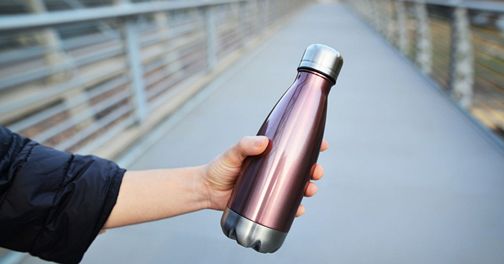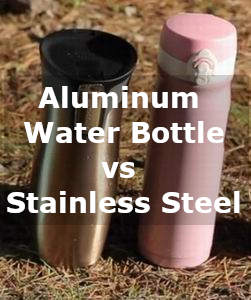
Content-less Iron Water Tanks on Airplanes: Criteria and Recommendations
For many travelers, an iron water tank is an expensive travel instrument. Considered an impeccable cost-saving technology, they help limit the introduction of plastic water bottles on the ground or while traveling.
However, air travel almost always raises questions about whether it is worthwhile to ingest iron field bottles and which criteria and advice need to be taken into account when transporting them by plane. This memorandum will discuss all the nuances that come with transporting empty iron bottles on airplanes.
It is important to know that every airline has its own standards and advice regarding the transportation of iron bottles. Before traveling, it is advisable to inform yourself of the regulations of each airline you will be traveling with to prevent problems during safety tests at the airport.
Empty iron bottles on airplanes: standards and advice
When traveling by plane, there are many problems with transporting things; one is the possibility of an empty iron drinking water reservoir being arrested with you.
For most airlines, you are even allowed to bring empty water bottles. Before packing, you must make sure it is empty so that it is not a hazard to airport security.
Additionally, bringing field bottles with large amounts of water is not recommended. The more water that goes into it, the harder the field bottle will become. If you plan to bring a field bottle, make sure it is less than 0.5 liters.
If you decide to bring an empty field bottle, make sure it is in your baggage so that there are no safety control issues.
Rules and Conditions
Empty iron bottles transported on board must meet weightless transport and safety control standards.
According to the regulations, it is forbidden to transport containers in flammable and explosive preparations. The fact should be considered that the actual size and capacity of the bottle can be limited by the airline.
Bringing fresh, sealed vials containing little or no liquid is considered more harmless. However, if the vial has already been used, it is advisable to wash it thoroughly before traveling.
To facilitate transport, it is recommended to place the vials in a separate bundle attached to a branch of luggage or under a chair in the cabin.
If you have any questions or doubts about the transport of empty vials, it is advisable to consult the regulations of the airline or an airport consultant.
Size Limitations
Restrictions apply to the dimensions of the baggage to be transported on board the aircraft. Baggage dimensions vary depending on the airline you are traveling with. Baggage should not normally exceed 56x45x25 cm (including handles and wheels).
Full hand luggage as well as empty envelopes must fit in the baggage. Therefore, when selecting your baggage, please pay attention to the dimensions of your baggage.
With some airlines you can take extra small bags or book bags. But in any case, the size of these bags may be restricted.
If your baggage exceeds the allowed dimensions of the recognized baggage, you must indicate this with a baggage band. In this case, you will have to pay an additional fee for the item.
Prohibited Articles
Certain objects are not permitted on board the aircraft.
- – Explosive preparations and materials.
- – Quantity flammable gaseous fumes.
- – Oxidation and organic peroxides.
- – Toxic and toxic materials.
- – Radioactive materials.
- – Water in excess of 100 ml (except for medicines and food for children under 2 years old).
Pistols and ammunition are also prohibited.
- Firearms (loaded and unloaded).
- Flammable weapons (knives, sheets, pans).
- Pneumatic and gas weapons.
- Explosive preparations and pyrotechnic articles.
- Knives and sharp objects.
- Tasers, spray cans and pepper spray.
Certain types of batteries are also prohibited.
- Lithium-ion batteries and rechargeable batteries.
- Lithium metal batteries and rechargeable batteries.
- Nickel metal hydride batteries and rechargeable batteries.
- Nickel cadmium batteries and rechargeable batteries.
Passengers are advised to take these restrictions into account when preparing their luggage to avoid customs declaration problems and delays.
Safety Check Procedures
During safety control, all passengers must check and test their luggage.
Passengers must remove all iron objects such as belts, jewelry, coins, etc. and place them in the X-Ray test basket. Additionally, passengers must remove shoes, gloves, scarves, and other clothing if asked by security inspectors.
When checking luggage, all items must be in separate containers for X-ray testing. This applies to baggage both on board and in the chair. Large objects are still scanned with the help of an X-Ray scanner.
Additionally, passengers must be detected along the metal detector. The metal detector can detect the presence of ferrous objects on the body. If the sensor detects a particular object, the passenger must remove it and test again.
After passing the security check, passengers have every opportunity to pick up their personal luggage and assets and continue their personal journey. Remember, however, that certain objects may not be accepted on board. Therefore, it is advisable to check the transport conditions on the airline’s website before traveling.
Advice for traveling with a travel pass
Before you travel, you need to know which area you are traveling to. If it is another country or mainland, it is advisable to learn the basic principles regarding culture, rules of conduct, and order of arrival to the country. It is also good to learn the most important texts and sentences in the language of the country you wish to visit.
Travel by land can take all kinds of forms: car, train, water, and even weightlessness. It is worthwhile to get information in advance about tickets and routes, timetables, and standards.
If you travel by public transport, you must take care of your own safety and your luggage. Leave your luggage unattended and do not leave it in the hands of strangers. Try to stick to the handrails in busy areas. Do not place your feet on adjacent seats.
When riding in a car, pay attention to the road. Follow traffic rules, wear safety belts and do not drive under the influence of alcohol. Do not leave valuable luggage on the front seat or rear rack.
Depending on the trip, special equipment may be required, e.g. mountain climbing, travel by boat, desert, etc. To prevent injury or discomfort, you must come to the starting point of your trip prepared and with critical equipment.
It is important to remember the laws and regulations of your neighborhood to avoid problems with residents and the police. Additionally, you must keep your property clean and tidy and protect its natural resources.
A note on special bottles for transport
If you are transporting bottles by plane, you need to consider what types of bottles are acceptable for transport. There are numerous categories of bottles
– PET bottles – less than 100 ml. May be carried in the passenger cabin. Bottles must be packed in plastic bundles with a maximum size of 1 liter.
– Glass bottles may be transported in the cargo hold as long as they are packed in such a way that they will not break during transit. It is recommended that glass bottles be wrapped in a smooth cloth, such as clothing.
– Iron bottles – When transporting in luggage, make sure the bottle is empty, sealed, and wrapped in a smooth cloth.
It is not recommended to bring liquor bottles on board, but if you do bring liquor bottles on board, be careful with their size and packaging.
Ideas for Iron Bottles on Airplanes
Metal bottles are useful during the flight, even if they do not contain water. Here are some ideas on how to use empty steel cans in airplanes
- Storing small items: Cans are great for storing small items such as coins, lighters, keys, plane tickets, etc.
- Medicine storage: If you are taking medication, can serve as excellent containers for tablets, capsules, and other medicines.
- Refilling water: If there is a faucet or drinking fountain on board, an empty iron water box can serve as a great container for frozen water.
Remember that empty iron bottles can be dangerous if not stored properly. Therefore, before traveling by plane, make sure the bottle is empty and the ends are tightly closed.
Advantages of Travel-Specific Bottles
In fact, there are many reasons why travelers use specially-shaped bottles instead of regular plastic bottles or regular glass bottles. Here are some of the advantages of special travel bottle shapes.
– PRINCE HOLDING: If you plan to travel to warmer climates, you must pay special attention to storing drinks and liquids that will be taken during the trip. Specially designed bottles can be used to keep frost out. This helps prevent intestinal infections in warmer climates.
– Protection against impact: Most water bottles are not designed for use outdoors. There, they have the opportunity to be exposed to bumps and falls. The most important striking feature of this particular type of watercolor is that it is impact resistant, can be used for a long time, and looks beautiful for a long time.
– Ergonomics: As a rule, travel bottles are more comfortably shaped than regular plastic or glass water bottles. They are designed for easy storage in a backpack or on a bicycle, allowing you to easily go to water or other liquids along the way.
– Environmentally friendly: Unlike plastic or glass bottles that need to be broken or thrown in the trash, travel bottles last longer and can be reused repeatedly, making them much more environmentally friendly.
How can I conserve water on board?
Conserving water on board is important because water is a limited resource and can freeze during land-based flights. All passengers can contribute to this by doing their bit to conserve water.
– Do not ask the stewardess to pour you a large portion of water if you do not intend to drink it right away. Ask for a smaller portion than normal and ask for more water if needed.
– Remember to turn off the faucet when you go to the bathroom. Remember that every extra liter of water you use may be needed by another passenger.
– If you buy bottles of water on board, do not throw them away. Instead, you can refill the pressure cooker at the airplane bar. This will certainly help reduce the number of plastic disposable bottles.
Saving money on board is not only about resources, but also about the comfort and safety of passengers and crew. Large amounts of wasted water can cause unpleasant odors on board, risk ice formation on the surface of the plane, and may be unsafe on board.
Baggage weight
When traveling by air, excess weight not only affects the fare, but can also affect the safety of the flight. Therefore, to reduce the weight of your baggage and optimize its contents, you should follow a few rules and guidelines
Choose lightweight materials: When selecting clothing and accessories, choose materials that are lightweight yet durable. For example, fabrics such as polyester, nylon, and microfiber are very well suited for travel.
Optimize your luggage: Before traveling, it is worth thinking not only about what to pack, but also about how much to pack. Try to keep your luggage to a minimum to avoid overpacking.
Smaller luggage: If you plan to carry a large piece of luggage, it is advisable to swap it for a smaller piece of luggage. For example, large, clean towels can be exchanged for small microfiber towels.
Reduce packaging: If you plan to bring water or cream, opt for smaller packaging. Use containers of 100 ml or less and place them in colorless roll-ups for easy identification at the airport.
Prefer quality: However, lightweight materials are often more expensive. High-quality materials will make your clothing and equipment last longer, preventing extra expenses and saving you time in finding the best items for your upcoming trip.
Tips for Travelers
1. plan your trip in advance. Plan your trip in advance to avoid stress and space issues. Book your hotel early and know where you will be traveling to so you know what to expect.
2. stay safe. Remember to be protected at all times during every stage of your trip. Keep valuables in a safe place and do not leave them unattended. Do not give personal information to strangers.
3. Carry only the luggage you need. Don’t pack too many things you won’t use. Leave everything you need for your trip at home. This will make it easier to get around and you won’t have to worry about extra luggage.
4. be prepared for all changes. Your trip may not go as planned. Unexpected events may occur and affect your trip. Be prepared for all changes and do not give in to vanity.
5. savor the moment. Finally, remember that travel is about enjoying your time away from home. Enjoy every element of your own trip and create an impression that will last a lifetime.
Referral services where you can find criteria and tips for specific airlines
If you are planning to fly and want to know what items you are allowed to carry on board with any airline or other carrier, check the official airline Web site. Usually, the airline’s website has a special section where you will find complete information about carry-on baggage and baggage regulations.
If you are not sure which airline offers flights to your desired destination, you can use online booking services that gather information from a variety of sources to help you choose a more suitable option. Some of these services provide more detailed information on baggage and unusual items.
If you are looking for more information on general cabin baggage rules, such as cosmetics that may be carried as carry-on baggage, check the Federal Aviation Administration Web site or the International Air Transport Association (IATA) Web site for a list of restricted or prohibited items.
– Official airline websites
– Ticket search service
– Russian Federal Aviation Administration Web site
– International Air Transport Association (IATA) website
Advance information on water available on board
Traveling by air can be very challenging and should be planned in advance to ensure your own comfort. One of the most important characteristics of this is access to water during the flight.
It is recommended that you familiarize yourself with your airline’s regulations and find out what type of water is available on board before your flight. As a general rule, bottled drinking water that meets quality and protection standards is provided on board. Tea, coffee, and other beverages are also available on board.
If you have special dietary requirements, such as vegetarian or gluten-free meals, you must notify the airline in advance. They will usually provide personal food for these passengers.
Some airlines offer the option of carrying personal water on board in a special package. However, to avoid problems, before doing this the conditions of transport and packing must be clarified.
Finally, it may be important to know in advance the options and standards for access to onboard water to enhance personal comfort during the flight.
Answers to Questions
Q: Is it possible to bring an empty iron bottle on the plane?
Answer: yes, it is possible. However, there are some criteria and tips that need to be considered when taking an empty field bottle on an airplane.
Q: Are there any restrictions on the contents of the bottle?
Answer: No, there are no restrictions on content. However, remember that the larger and heavier the bottle, the more space it will require in your carry-on baggage and luggage.
Question: May I bring field bottles to my cabin?
Answer: Yes, it is allowed, but the vial must meet safety requirements. For example, the vial may not contain liquids, the size of the vial may not exceed the allowed limits, and the vial must be airtight and undamaged.
Question: What is the maximum content of vials allowed on board?
A: The maximum content of a vial on board depends on the airline and national regulations, but generally the limit is 100 ml.
Question: If there is alcohol in the vial, do I need to indicate this when purchasing my ticket?
A: If you plan to bring alcoholic beverages with you, you must confirm that you are allowed to consume alcoholic beverages according to airline standards. Additionally, when purchasing your ticket you will be asked to indicate the presence of alcohol in your baggage or checked luggage.






